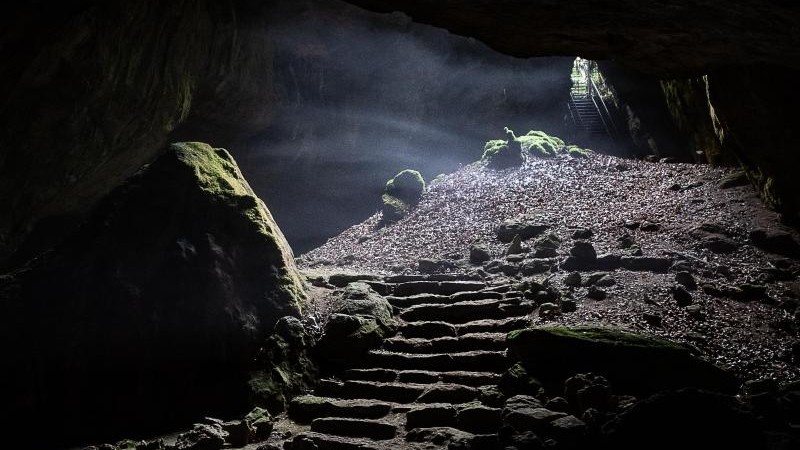Hanover (dpa) – Researchers have discovered a giant deer bone decorated by a Neanderthal man in a rhinoceros cave in the Harz Mountains.
The discovery was a sensation, because it showed that our closest genetic relatives had amazing cognitive abilities more than 50,000 years ago, said the University of Göttingen.
For a long time, Neanderthals were considered relatively primitive. Although he is now known to have made tools and weapons, so far cave paintings and small figures have been discovered almost exclusively from modern times, when modern humans (Homo sapiens), who came from Africa, spread throughout Europe.
An angular pattern consisting of six slits is carved into the compacted toe bone. Archaeologist Thomas Terberger said one aspect has turned into a show. The bone can also be quenched, and there is a pattern of four other short incisions at the bottom. The object indicates that Neanderthals did indeed have an aesthetic sense and may have communicated via symbols. “This speaks of an independent evolution of the creative power of Neanderthals,” Terberger said. The research team published the new findings in the journal Nature Ecology and Evolution.
“It should not be a coincidence that Neanderthals chose the bones of an impressive animal with massive antler shovels for carving,” said Antje Schwalbe of the Technical University of Braunschweig, who is involved in the project. Giant deer antlers had a wingspan of up to four meters.
Different quality from previous finds
In France, few pendants and claws made by Neanderthals as jewelry objects, as well as simple abstract decorations have been found on cave walls in Spain. The new discovery from a rhino cave is one of the most complex forms of artistic expression known to Neanderthals so far, London researcher Silvia Bello wrote in a commentary in the specialist journal.
To make a comparison, the research team conducted experiments on the bones of today’s cattle. It turns out that the bone must first be boiled in order to engrave the pattern on the surface of the soft bone with stone tools in about 1.5 hours.
The patterned toe bone is about six inches long, just under four inches wide and about three inches thick. It was found in 2020 among the remains of hunting prey at the entrance to the cave near Herzberg am Harz – during an excavation carried out by the Lower Saxony State Office for the Conservation of Archaeology.
The Leibniz Laboratory of Age Determination and Isotope Research at Kiel University determined an age of more than 51,000 years for decorated bone using the radiocarbon method. It is therefore much older than the approximately 40,000-year-old Neanderthal jewelry pieces from France, which are debated over whether they were merely imitations of modern human art, which actually reached Europe at this time.
Research remains puzzling as to what caused the extinction of Neanderthals, who lived in the last Ice Age about 40,000 years ago. What is certain is that it mixed with modern humans, because traces of its genetic makeup can still be found in our genome to this day. We have about 2% of Neanderthal genes, Terberger says.
© dpa-infocom, dpa: 210705-99-269211 / 2

“Alcohol buff. Troublemaker. Introvert. Student. Social media lover. Web ninja. Bacon fan. Reader.”





More Stories
Up to 100 pilot whales stranded in Western Australia – Science
Huge radiation explosion from a magnetar – forschung.de
Principles and features of the folk nutritional principle